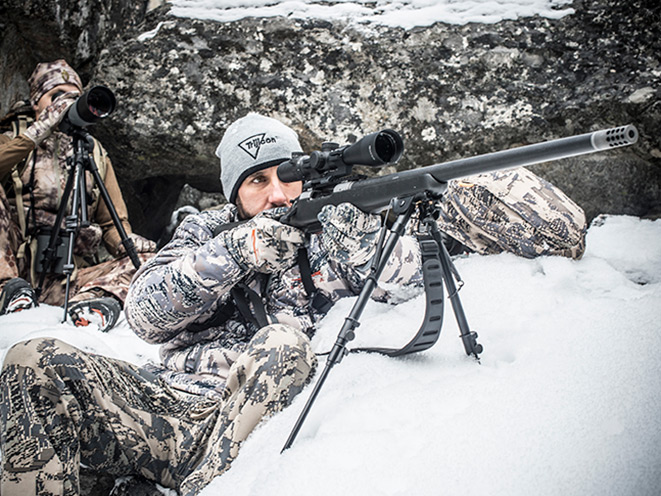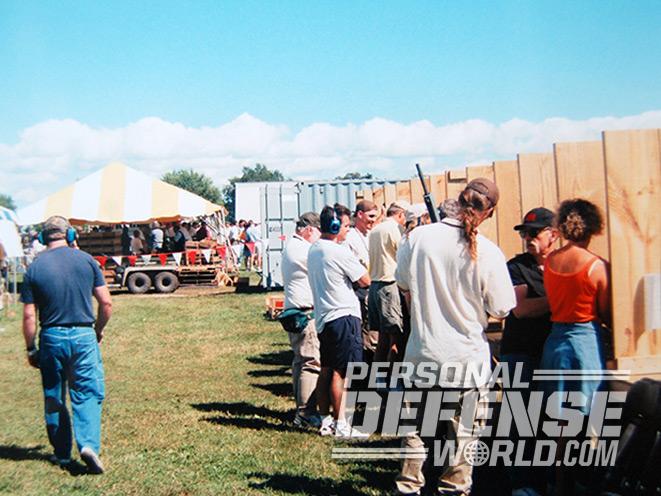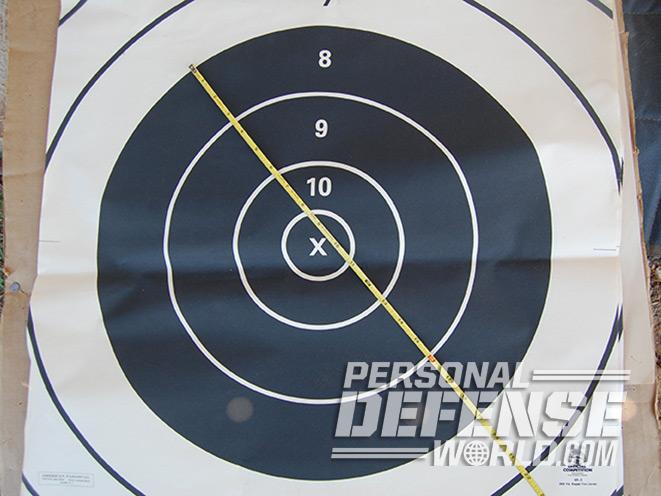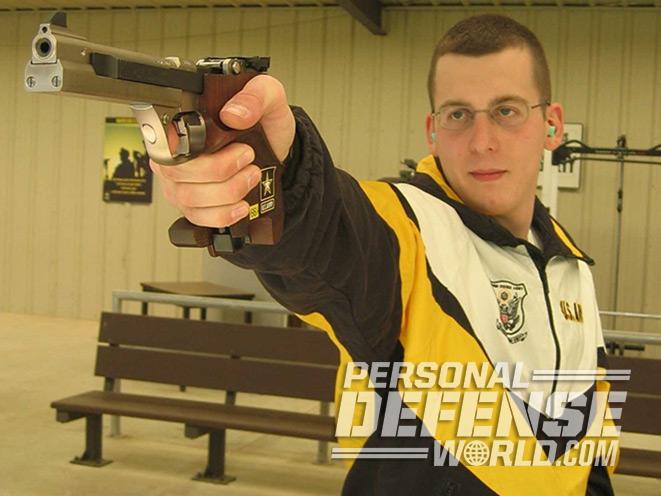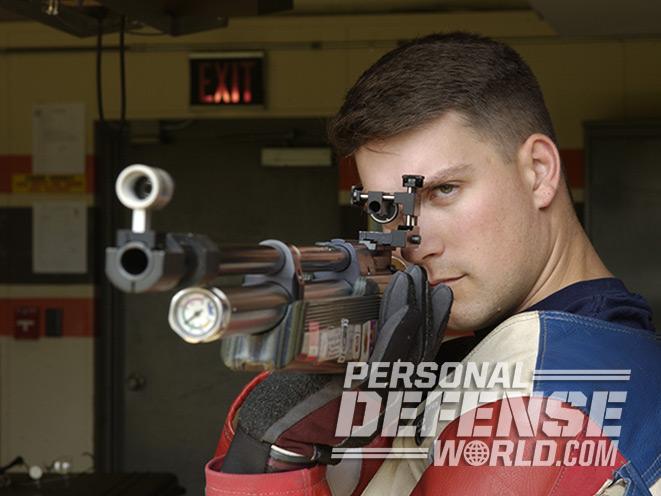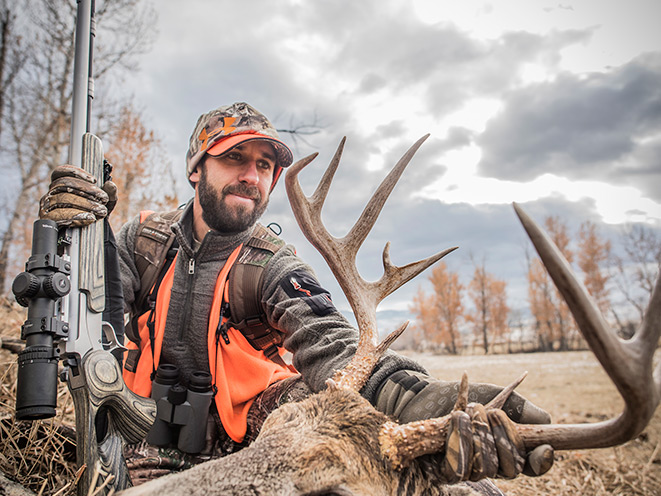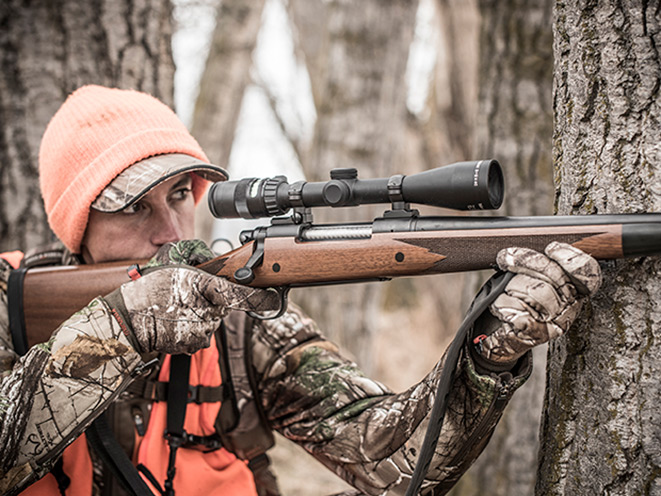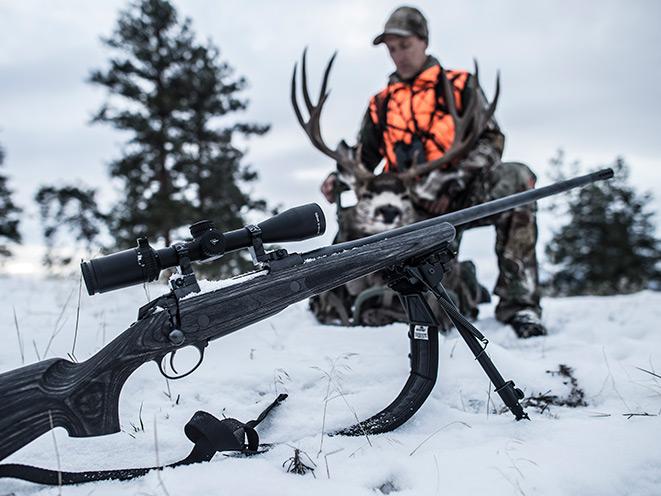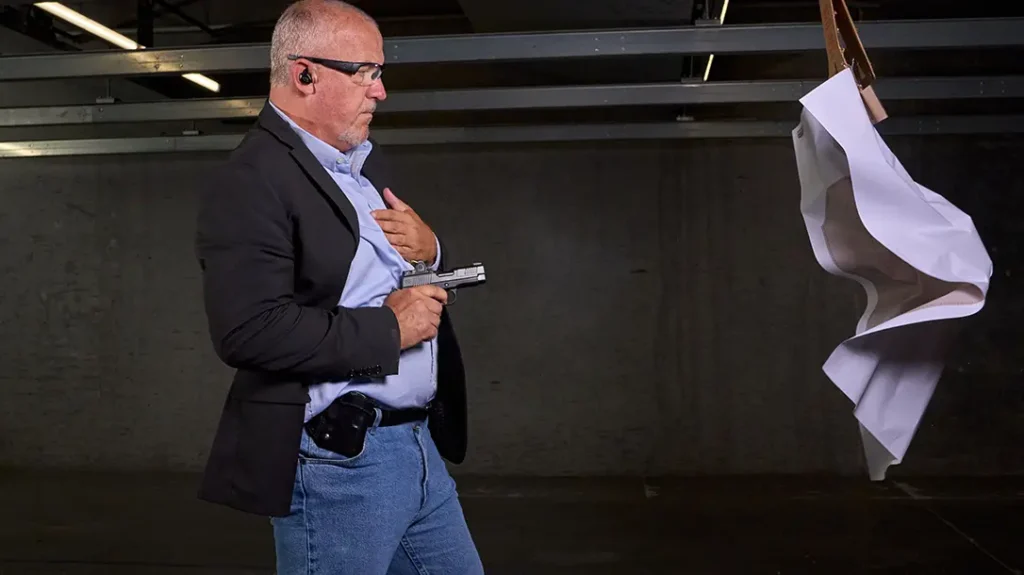The most important thing a hunter can do with respect to field marksmanship is to make a realistic self-assessment of personal skill. What shots can and can’t one currently bring off? It is far better to pass up a low-percentage shot than to wound an animal uselessly, and the only way to identify a low-percentage shot is to test, to discover by trial and error one’s effective range and approach. Once one’s skill level is known, more ethical choices while hunting can be made.
A shooter desiring to improve shooting skills, for hunting or any other purpose, has to improve his or her ability to fire an accurate shot. The best source of information for improved position shooting are the formal target shooters competing in the conventional disciplines, such as those who shot internationally, at the Olympics and at America’s National Matches at Camp Perry. Too many hunters dismiss these events, their competitors and contributions as irrelevant. Rather than ignoring more than a century of hard-won knowledge, rank-and-file hunters would be better served examining the lessons these competitors can provide for us.
Take Your Best Shot
Advertisement — Continue Reading Below

Small-bore rifle shooters can routinely hit a dime-sized 10 ring at 50 meters, just over 1 minute of angle (MOA), from the standing position. Free Pistol shooters fire at the same distance, regularly hitting a 2-inch 10 ring (about 4 MOA) standing, unsupported, with one hand. Long-range shooters can routinely smack the 10 ring of an LR target, which is about the size equivalent of the vitals of large big game, 20 times in a row at 1,000 yards using nothing more than a leather strap for support. True, some competitors use highly specialized firearms that bear little resemblance to traditional hunting arms (I’ve heard target guns referred to as “chemically operated paper punches”), but the basic concept is identical, and, more importantly, the score is earned by the human operator.
RELATED STORY: Are You A Rifleman? Put Your Skills To The Test
No gun, no matter how tricked out and accurate, can put a bullet in the center of a target unless the shooter points and holds the muzzle still while taking a shot. The best target rifle or pistol that money can buy helps, but they only provide a 5- to 10-percent boost in score over “regular” guns. Those top scores have to be earned by the shooter’s skill.
Advertisement — Continue Reading Below
Competition shooting is a formalized approach to developing and testing the ability to fire an accurate shot on demand. As a hunter, you may not be interested in spending time involved in formal target competition, but you can borrow from their playbook. No, I’m not suggesting you attach a butt hook and palm rest to your .30-30 Win or that you prowl the deer woods in a heavy, leather Creedmoor Hardback shooting coat. Instead, emulate their ideas for producing an accurate shot.
Beat The Bullseye

The first step in emulating the target shooter is to do some target shooting yourself, adapting your practice to your goal of improved big-game hunting and using the hunting arm you already own. Target shooters try to outperform each other by scoring more points on a regulation target at regulation distances. When shooters start cleaning the targets, the organizing body sanctioning the event introduces a smaller target, and competitors keep at it (as happened when the organizers of the High Power competition replaced the old 5V targets with decimal targets with smaller scoring rings). Big-game animals are all roughly the same size, so the hunter challenges himself by increasing the distance at which he can guarantee a vital-zone hit, effectively reducing the size of the target.
Advertisement — Continue Reading Below
To practice, choose a target with a bullseye with one or two scoring rings inside that is the same approximate size as the vitals of the game animals you pursue. To hit the visible bullseye anywhere is to make a vital-zone hit, and the internal scoring rings reward better performance. The vital zone will range from about 8 inches for pronghorn antelope and small deer to 18 inches or so for large elk or moose. The repair center of a B-6 bullseye pistol competition target has an 8-inch bullseye out to the eight ring. As used in across-the-course rifle competition, both the SR and SR-42 targets feature a 13-inch bullseye, and the SR-3 has a 19-inch bullseye out to the eight ring. If these are too fancy for you, a common paper plate from the grocery store is 9 inches in diameter overall and has a smooth inner circle about 5.5 inches across, dimensions nearly identical to the B-6’s.
RELATED STORY: Hitting the Bullseye – Improving Your Shooting Skills Through Visualization
To begin the “Hunter’s Target Shooting Match,” select a target size that suits you, and place it at a reasonably challenging distance. The goal is to hit the bullseye from a given position at a given distance every time, demonstrating the accuracy necessary for taking down big game under similar conditions. Note that this is a test of accuracy and not merely precision. Achieving groups smaller than an animal’s vitals in size is irrelevant if your shots aren’t actually landing inside the bullseye.
Advertisement — Continue Reading Below
Let’s say you fancy the kneeling position, and you think 200 yards is within your effective range. Set your target up, return to the 200-yard line and load. Start from standing up, holding your rifle just like you would while walking in the field. Then assume a kneeling position and fire one shot at the target as accurately as you can with no time limit. Reload, stand back up and repeat four more times.
Clear the range and score. If any of the shots have landed outside the bullseye, it indicates you are out of range. Either get steadier (shoot from prone, use a sling or improve your kneeling position) or get closer. If all the shots have hit the bullseye, and if three or more have landed in the interior scoring rings, scoring more than 40 to 45 points, you can probably extend your range from this position.
Stay On Target
Advertisement — Continue Reading Below

This simple exercise can be done from any distance using any position useable in the field. Try it prone, standing, resting on a tree or sitting. Try it with and without a shooting sling or other shooting aids such as bipods or shooting sticks. Being a true accuracy test, this also shows if something causes a point-of-impact change.
Please note that each exercise—each shot progression—begins from a standing position. Proceeding from standing is a basic test of gun handling. Don’t start aimed in; rather, acquire the position for each shot, just as you would in the field. Also, though your shooting is not timed, you should be able to fire the shot in about three to five seconds after you’ve acquired the position and settled in. Taking longer than this indicates indecisiveness, probably due to excessive wobble; and if you’re proceeding indecisively, you are most likely outside your effective range.
RELATED STORY: Massad Ayoob’s Speed and Accuracy Shooting Drills
Advertisement — Continue Reading Below
One last note: A score of 40 to 45 with all five of your shots landing in the bullseye establishes your maximum distance under perfect conditions, where there was plenty of time and the distance and target angle were perfectly estimated. You may not be so lucky with live game.
To improve your skills, use the same position and distance, testing yourself on an ongoing basis and tracking improvement. When you can shoot to score more than 45 points, move the target farther away. This is the basic principle by which all competition shooters proceed.
Going The Distance
Advertisement — Continue Reading Below
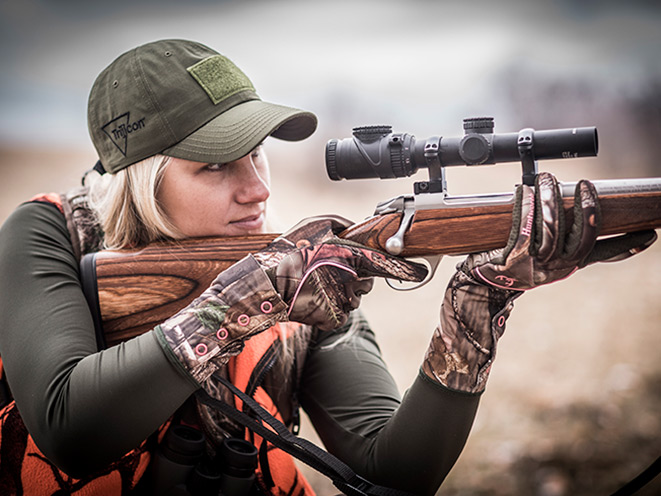
The problem most hunters will have with this initially is in establishing a realistic distance from which to begin. It is stunning how many hunters have no working idea what they can and can’t accomplish with a rifle they’ve owned for over a decade. Volunteering to work a range for Ducks Unlimited at its Great Outdoors Festival, I was shocked by the number of attendees who were convinced that their targets were “at least 100 yards, maybe a bit farther” when the actual distance was 51 yards. Whenever a hunter without competition or decent shooting-school training spins a hunting yarn, I mentally divide all stated distances by two or three to arrive at the actual range.
The maximum range drill is a needed reality check. A mediocre marksman can still be a successful hunter if he knows when to hold ‘em and when to fold ‘em. To get started, rather than post a target at a randomly determined distance and fumble about for a realistic hold ‘em range, I designed a simple 100-yard target.
Advertisement — Continue Reading Below
My aiming mark is a modified Canadian bullseye, as found on older military 25-meter zero targets, 10.5 MOA wide and 4.5 MOA tall. From the bottom edge, an easily-defined point of aim for all types of iron and optical sights, the desired point of impact is just over 2 inches up, yielding a reasonable zero for many field shooting and hunting needs. Most optical sights lacking objective focusing will be parallax free (or nearly so) at 100 yards. The rings are scaled to represent an 8-inch vital zone at distances from 100 to 500 yards. Place the target 100 yards away and shoot a five-shot group from the position of your choice. Add up the score and multiply it by 10 to get a rough estimate of your effective maximum range in yards.
True, there are a host of issues that can occur when shooting at actual range. This quick test provides an educated guess, and practicing all of your desired positions and field shooting situations at a single, typical distance is more convenient than a random stab in the dark. Whatever the path to self-enlightenment, to know—and not guess—if a shot is realistic makes you a better, more ethical hunter.
This article was published in the 2016 issue of Gun Buyer’s Guide. For information on how to subscribe, please email Subscriptions@a
